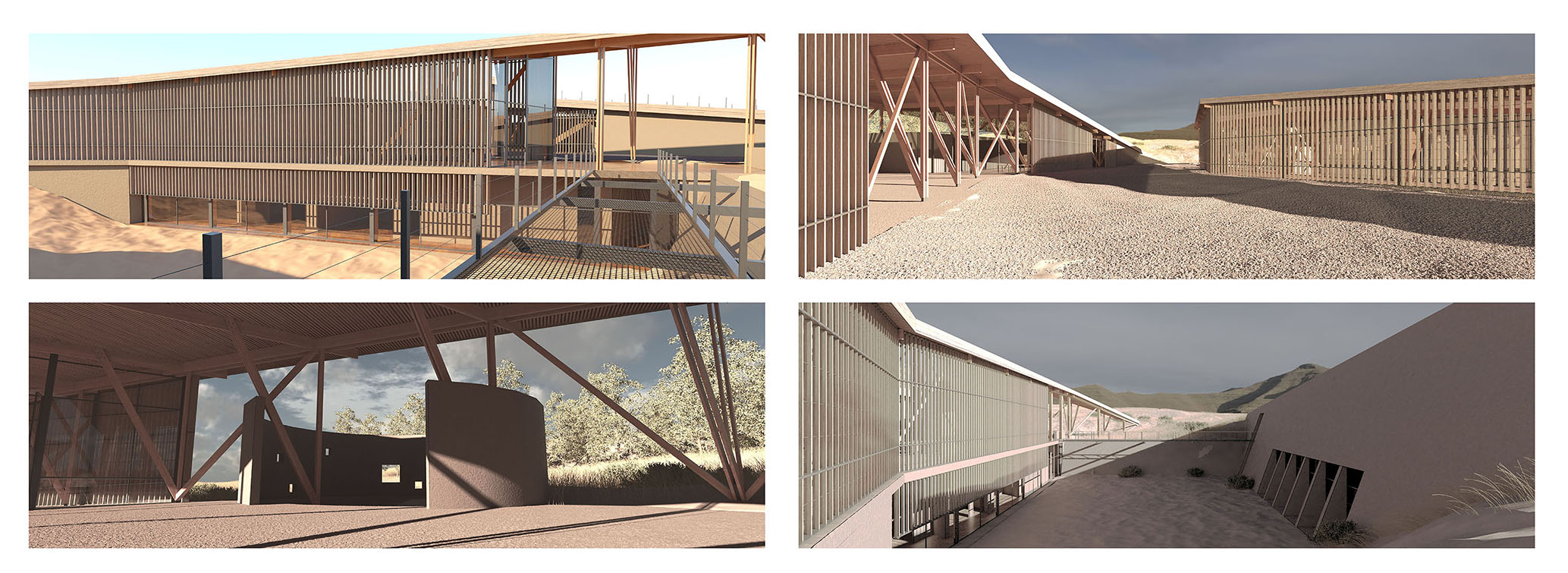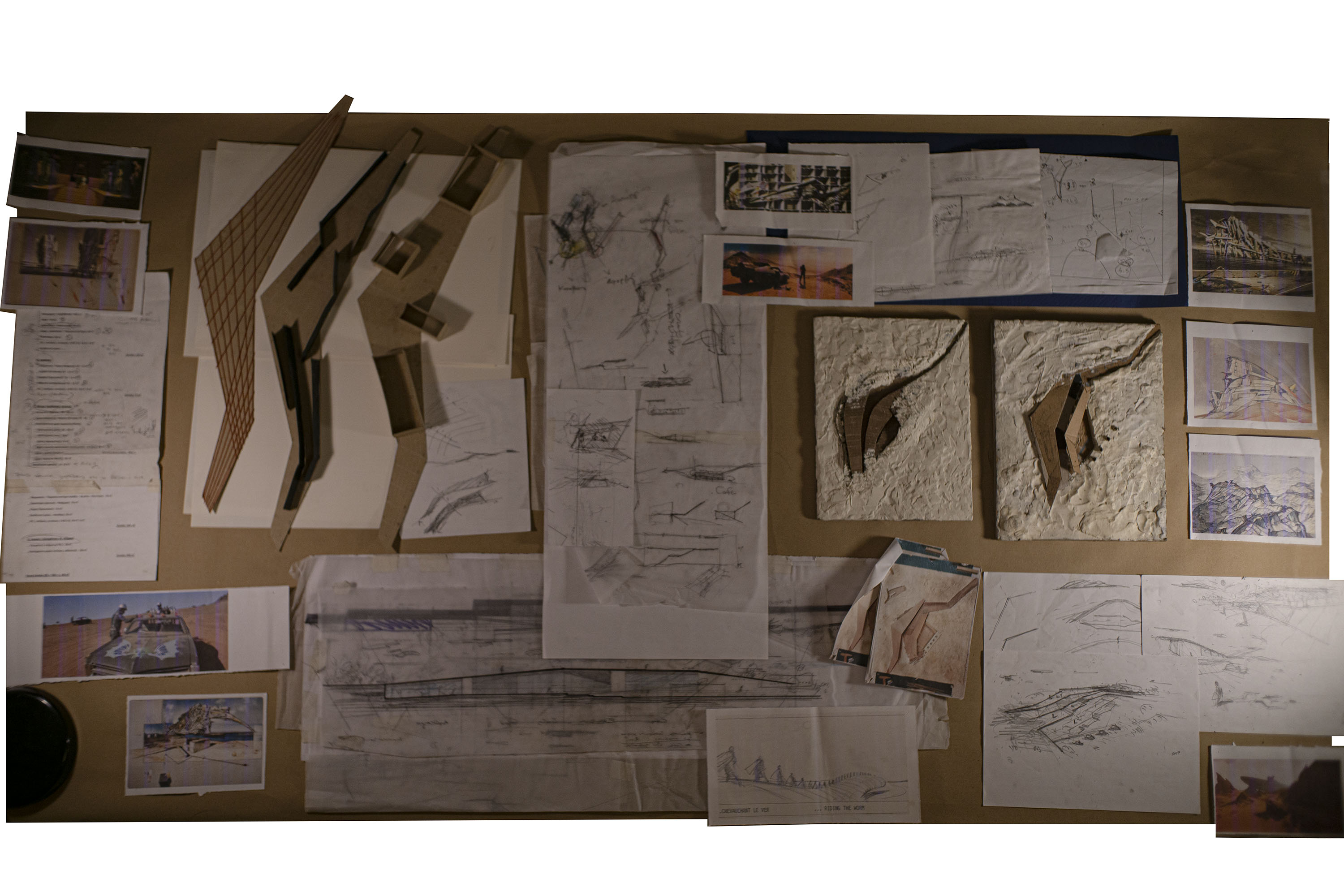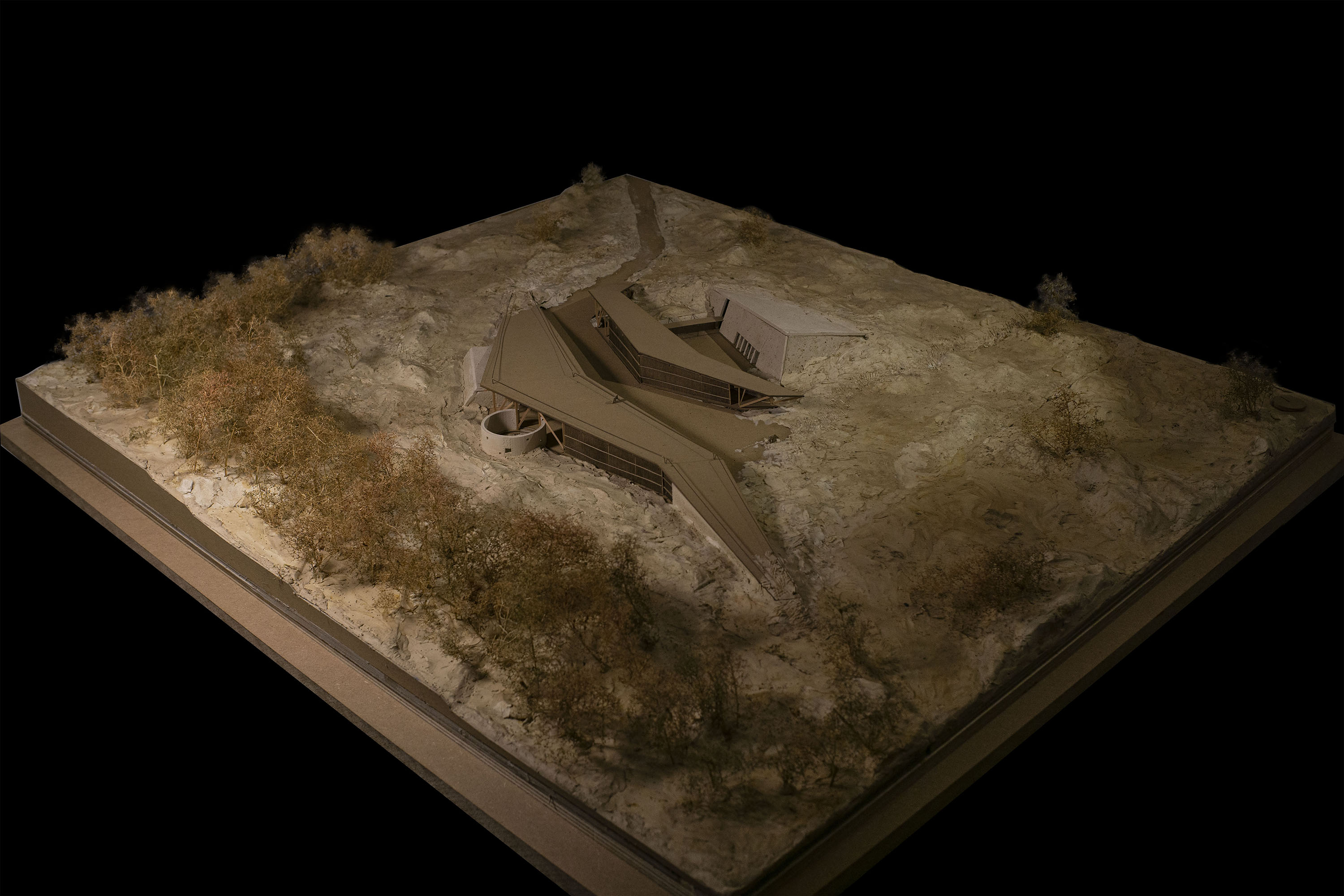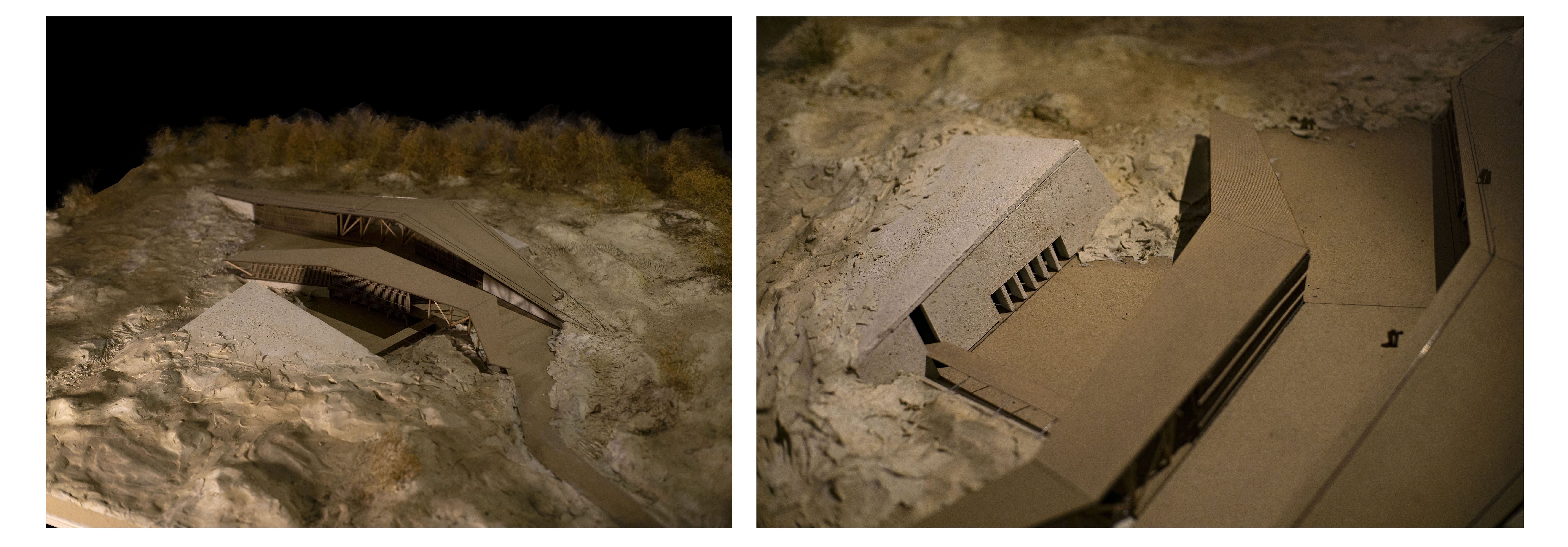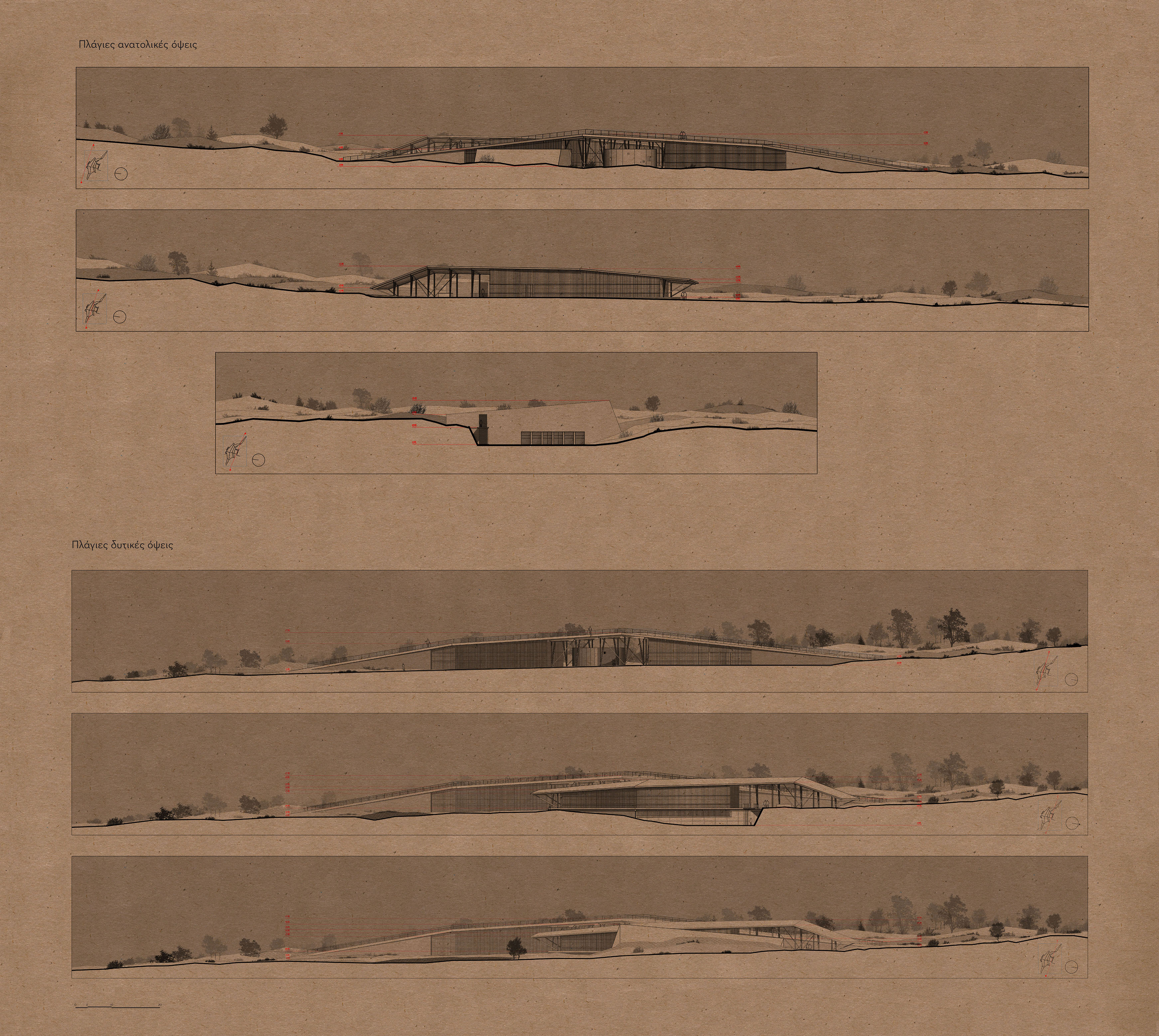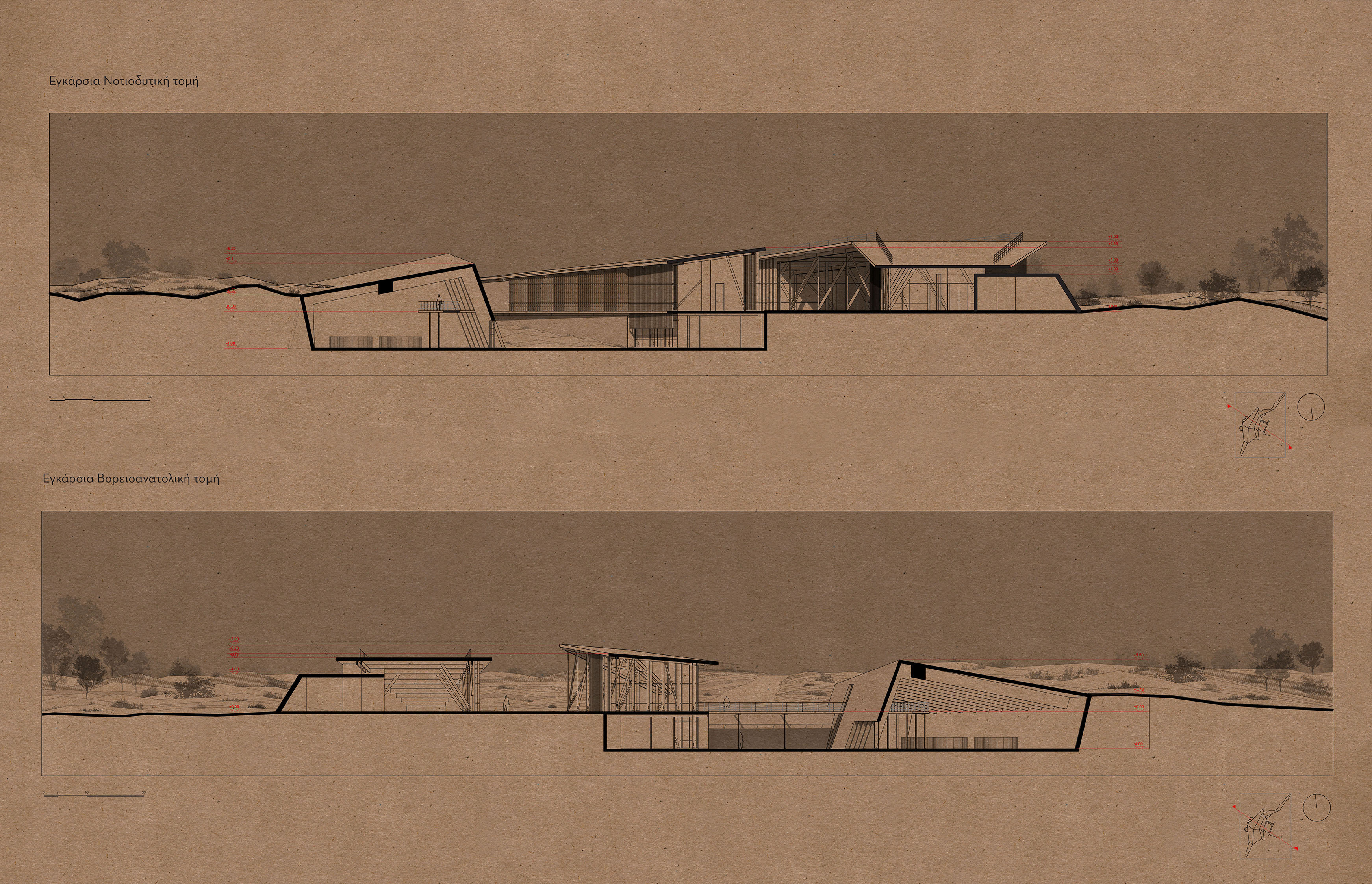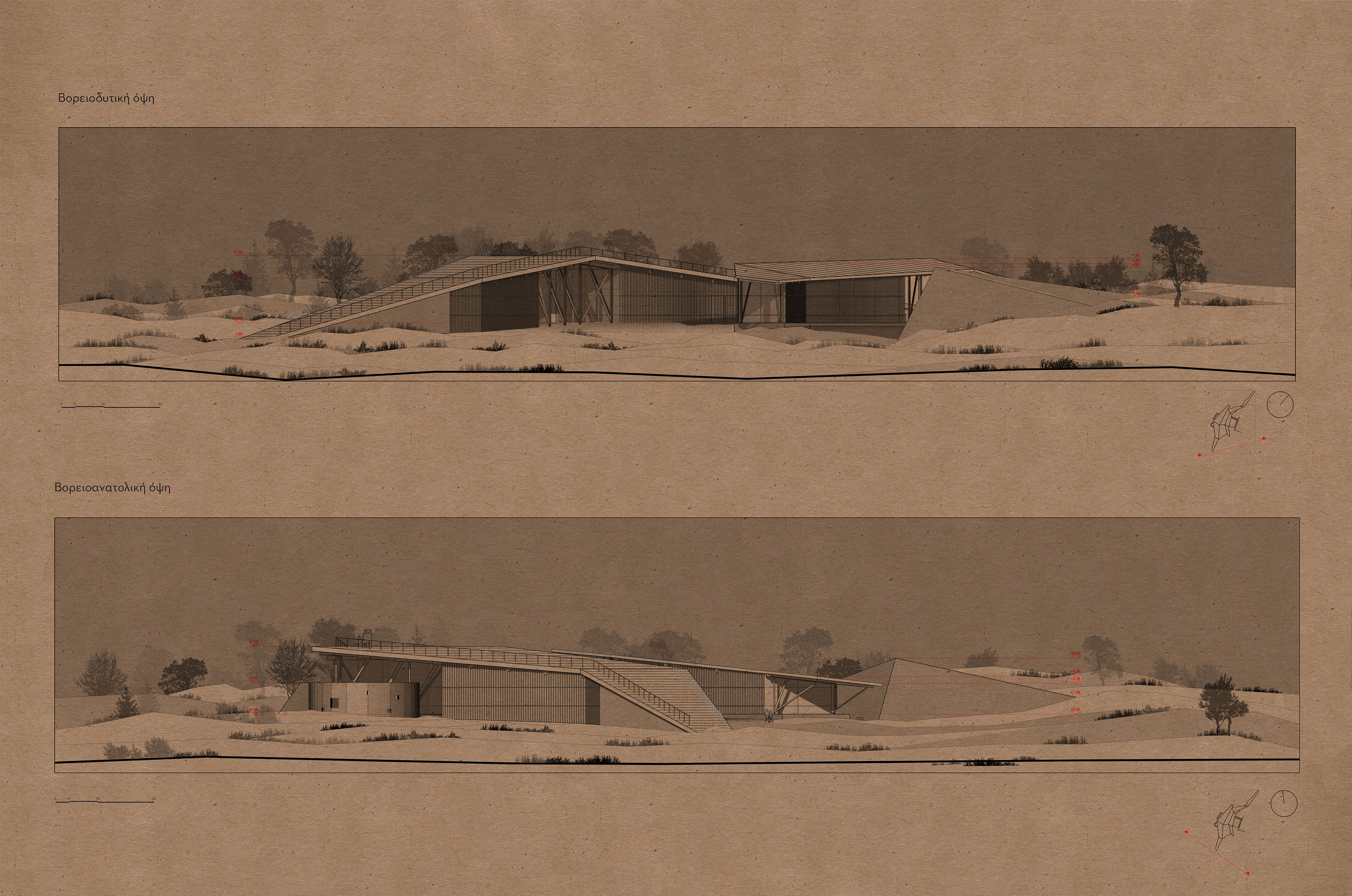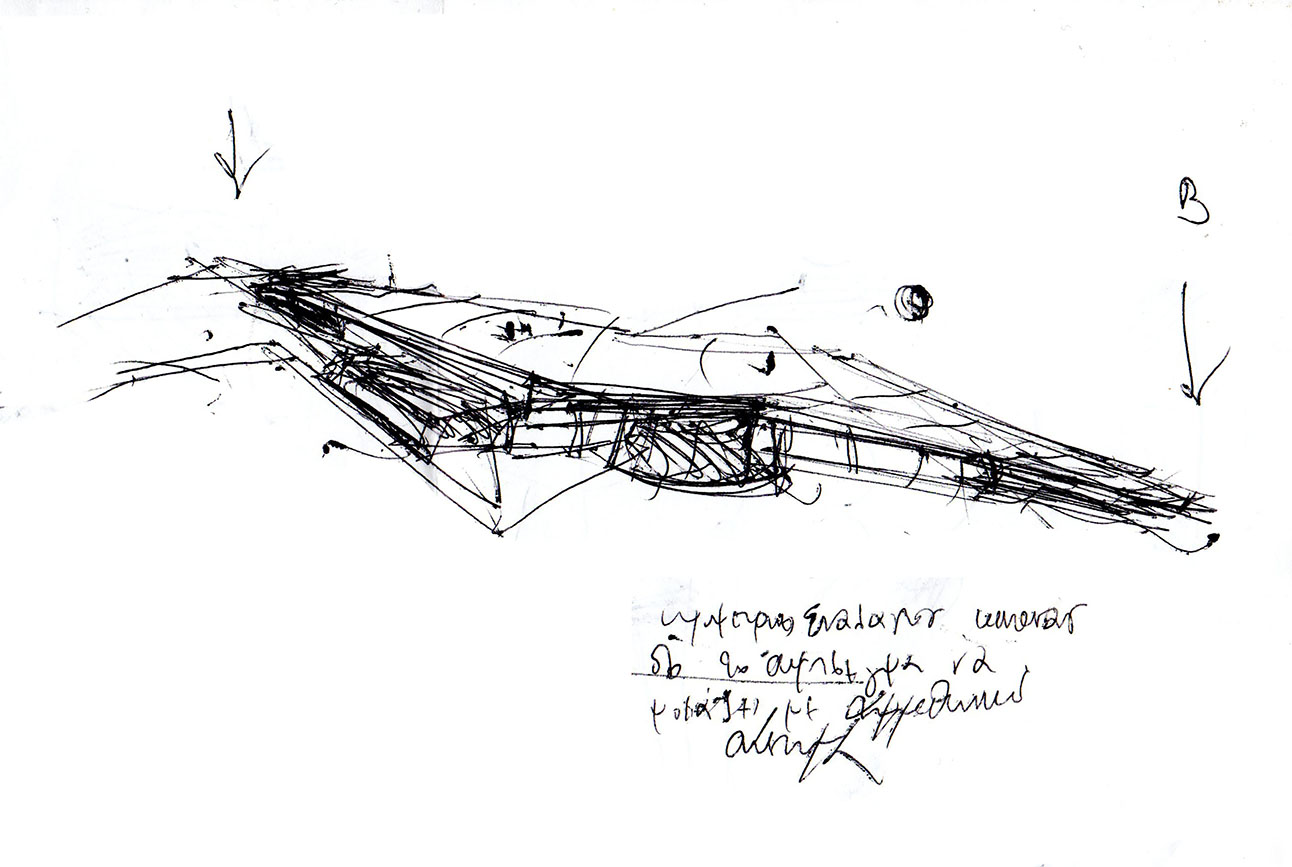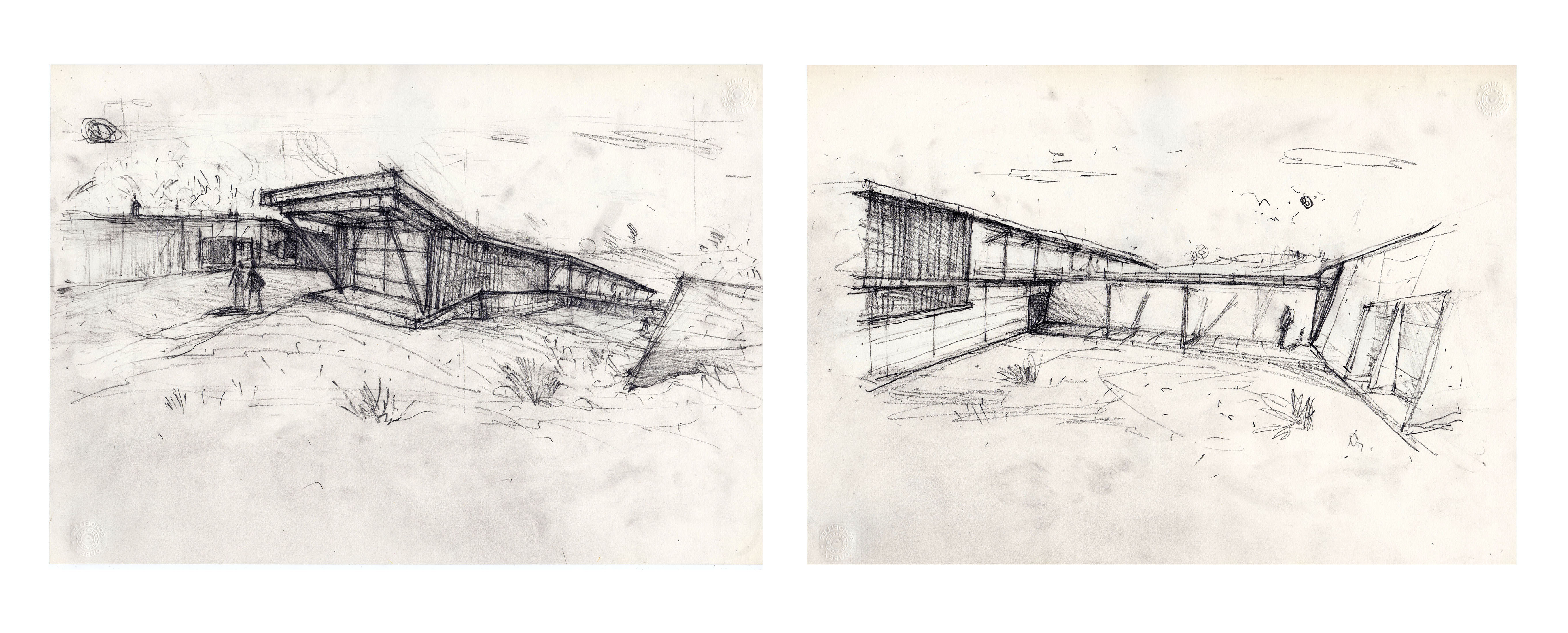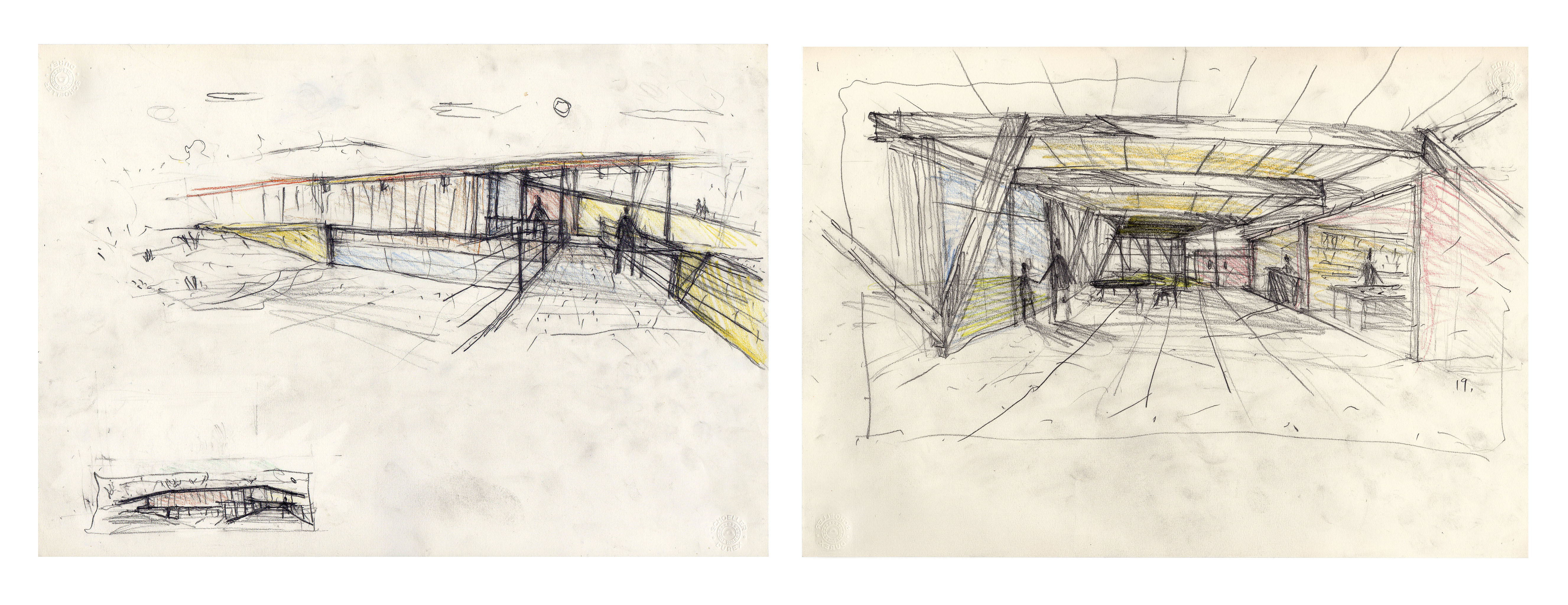The following thesis entails the design of a Centre for Environmental Protection and Information regarding the Sea Turtle Caretta Caretta on the island of Zakynthos.
The target of this project is to face the problem of diminishing biodiversity of the island focusing on the Sea Turtle. The Caretta Caretta can be found in the Mediterranean mainly the eastern section with the epicentre in the Ionian Islands due to the ecosystem therein. In early spring the Turtles migrate from the central Mediterranean to areas of reproduction where they make their nests from mid May until the end of August. Unfortunately though only 1 or 2 in 1,000 newborns survive resulting in a reduction of 92% since 1980. This massive decrease is due to natural threats and , of course, human intervention.
As a point of intervention the Bay of Lagana in Zakynthos was selected. Lagana is located 9 kilometres from the main city of Zakynthos and is the most popular tourist location on the island.
It is one of the largest bays in Greece with a coastline of approximately 20 kilometres. This is where the Caretta Caretta makes its home and is considered the main and most important locations in the Mediterranean where the Turtle lays her eggs due to the large number of nests.
The natural structure of the area makes it the perfect strategic location suitable for the centre with road networks and easy access for visitors, staff and volunteers. The location of the centre was chosen in order to maintain the correct distances from the area where the Turtle is permanently hosted and is recuperating, with the minimum of noise and light pollution. But the main reason this location was chosen is easy access and immediate contact with the bay.
The continuous supply of water is a major factor of the centre which will consist of 20 tanks for the convalescing Turtles and is a basic requirement for correct operation and hygiene requirements for injured animals with the ability to pump sea water allowing imperative regular changes. It should also be noted that the vicinity of Lagana with the airport makes the transportation of sick and injured Turtles throughout the Mediterranean easier.
A parametre which was noted in this proposition is the use of adequate infrastrucure regarding buildings and materials and technical competence at the spatial and practical level so as to be enclosed in a single complex therefore including all activities of the water park. The building programme of the centre foresees different organisations and services designed to protect the Turtle. Apart from the area for visitors and information for the public and administrative services, the main function of the centre is care and recovery of injured animals. In this way the Turtles can remain on the island making transfer to Athens unnecessary.
Another important factor at the commencement of this project was that the centre should be at one with the natural environment. Total harmony of the topography of the region was created from the natural characteristics which was the main goal and the basic original conception. The harmonization of the unique relief was achieved by escalating and rising the roofs but also with land reclamations to keep indoors reluctantly emerging through ever-changing sandy landscape.
Anotherbasic synthetic principle is the concept of reversability, i.e. the ability to easily disassemble building structures so if it is necessary to remove them from the intervention site it can be done without causing significant damage to the environment. This would be achieved by using wood as the basic material, though it can also be achieved by limited use of cement where deemed necessary. The composition consists of three autonomous building modules which are connected with outdoor and semi-outdoor movements. These modules are distinct from their functional character. The first module is public and hosts an env ironmental information centre and with a possible form of tangible information on the west related to visitors information regarding the Sea Turtle.
The second section has a semi-public space arranged in the centre of the complex and includes, on the lower level, management areas which accomodate the nursing area which together with the third section of the tanks for the injured animals constitute the single care zone of the complex.

